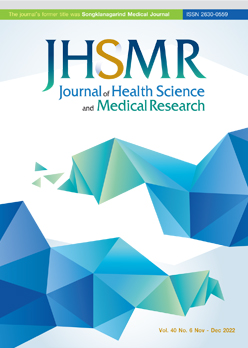Giant Brain Abscess in A Pediatric Patient with Congenital Heart Disease: A Case Report
DOI:
https://doi.org/10.31584/jhsmr.2022872Keywords:
cause of death, cerebral abscess, child health, congenital heart disease, pediatricAbstract
Cerebral abscesses, or brain abscesses, are a severe condition, can be fatal, and have a high mortality and morbidity rate; especially in children with congenital heart disease. Herein, we report on a 5-year old girl, who developed a giant brain abscess with congenital heart disease; however, regrettably, the patient died 24 hours after her operation. Brain abscesses are still a major consequence of cyanotic congenital heart disease. The development of radiological imaging; especially, computed tomography scans, and continuous updates on antibiotic therapy and minor invasive surgery have decreased the mortality rate; however, it still remains quite high. Brain abscesses in congenital heart disease have many pitfalls, and require a multidisciplinary approach as well as careful preoperative planning to achieve the desired outcome.
References
Mameli C, Genoni T, Madia C, Doneda C, Penagini F, Zuccotti G. Brain abscess in pediatric age: a review. Childs Nerv Syst 2019;35:1117–28.
Mehnaz A, Syed AU, Saleem AS, Khalid CN. Clinical features and outcome of cerebral abscess in congenital heart disease. JAMC 2006;18:21–4.
Centers for Disease Control and Prevention. Data and statistics on congenital heart defects. Atlanta: Congenital Heart Defects; 2020.
Takeshita M, Kagawa M, Yato S, Izawa M, Onda H, Takakura K, et al. Current treatment of brain abscess in patients with congenital cyanotic heart disease. Neurosurgery 1997;41:1270–9.
Moorthy RK, Rajshekhar V. Management of brain abscess: an overview. Neurosurg Focus 2008;24:E3.
Parra MM, Hernandez M, Garza EA de, Reyes DP. Brain abscess in pediatric patients with congenital heart disease: a case report and review of the literature. J Cardiol Curr Res 2018;11. doi: 10.15406/jccr.2018.11.00370.
Lumbiganon P, Chaikitpinyo A. Antibiotics for brain abscesses in people with cyanotic congenital heart disease. Cochrane Database Syst Rev 2013;CD004469.
Matson D, Salam M. Brain abscess in congenital heart disease. Pediatrics 1961;27:772-89.
Firdausy NQ, Murni IK, Triono A, Noormanto N, Nugroho S. Low peripheral oxygen saturation as a risk factor for brain abscess in children with cyanotic congenital heart disease. Paediatr Indones 2018;58:252-6.
Muzumdar D, Jhawar S, Goel A. Brain abscess: an overview. Int J Surg 2011;9:136–44.
Sharma BS, Gupta SK, Khosla VK. Current concepts in the management of pyogenic brain abscess. Neurology India 2000;48:105–11.
Tseng JH, Tseng MY. Brain abscess in 142 patients: factors influencing outcome and mortality. Surg Neurol 2006;65:557– 62.
Arlotti M, Grossi P, Pea F, Tomei G, Vullo V, De Rosa FG, et al. Consensus document on controversial issues for the treatment of infections of the central nervous system: bacterial brain abscesses. Int J Infect Dis 2010;14:S79–92.
Takeshita M, Kawamata T, Izawa M, Hori T. Prodromal signs and clinical factors influencing outcome in patients with intra ventricular rupture of purulent brain abscess. Neurosurg 2001;48:310–7.
Savardekar A, Krishna R, Arivazhagan A. Spontaneous intra ventricular rupture of pyogenic brain abscess: a short series of three cases and review of literature. Surg Neurol Int 2016;7: 947.
Downloads
Published
How to Cite
Issue
Section
License

This work is licensed under a Creative Commons Attribution-NonCommercial-NoDerivatives 4.0 International License.
























